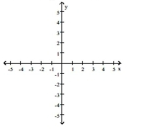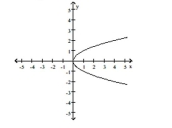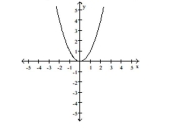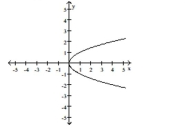Parametric equations and and a parameter interval for the motion of a particle in the xy-plane are given. Identify the particle's path by finding a Cartesian equation for it. Graph the Cartesian equation. Indicate the portion of the graph
traced by the particle and the direction of motion.
- 
A) ; Entire parabola, top to bottom (from1st quadrant to origin to 2nd quadrant) 
B) ; Entire parabola, right to left (from 1st quadrant to origin to 4 th quadrant) 
C) ; Entire parabola, bottom to top (from 2nd quadrant to origin to 1st quadrant) 
D) ; Entire parabola, left to right (from 4th quadrant to origin to 1st quadrant) 
Correct Answer:
Verified
Q3: Graph the pair of parametric equations
Q4: Graph the pair of parametric equations
Q5: Graph the pair of parametric equations
Q6: Graph the pair of parametric equations
Q7: Parametric equations and and a parameter
Q9: Parametric equations and and a parameter
Q10: Parametric equations and and a parameter
Q11: Find a parametrization for the curve.
-The ray
Q12: Graph the pair of parametric equations
Q13: Graph the pair of parametric equations
Unlock this Answer For Free Now!
View this answer and more for free by performing one of the following actions

Scan the QR code to install the App and get 2 free unlocks

Unlock quizzes for free by uploading documents